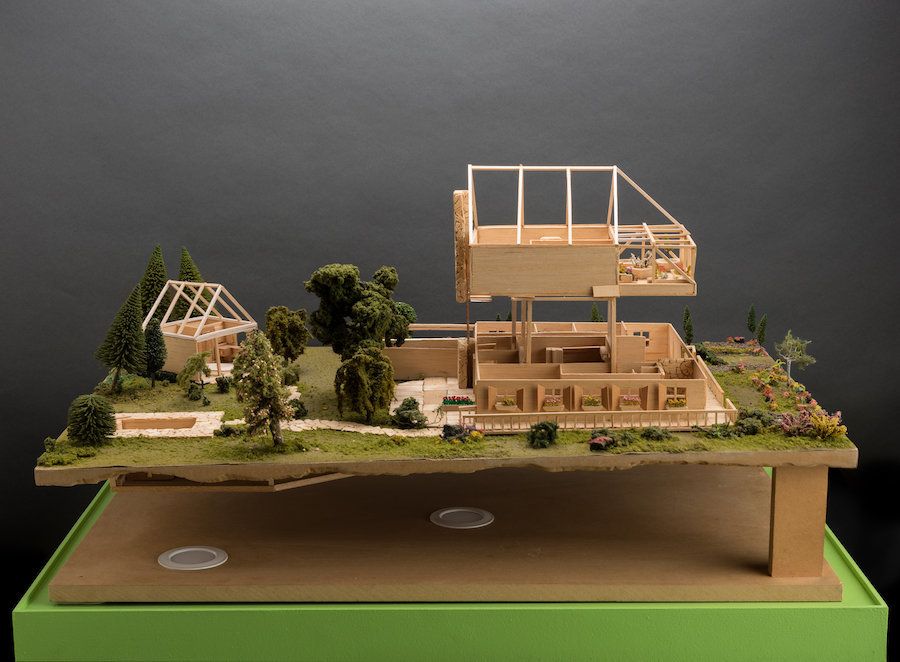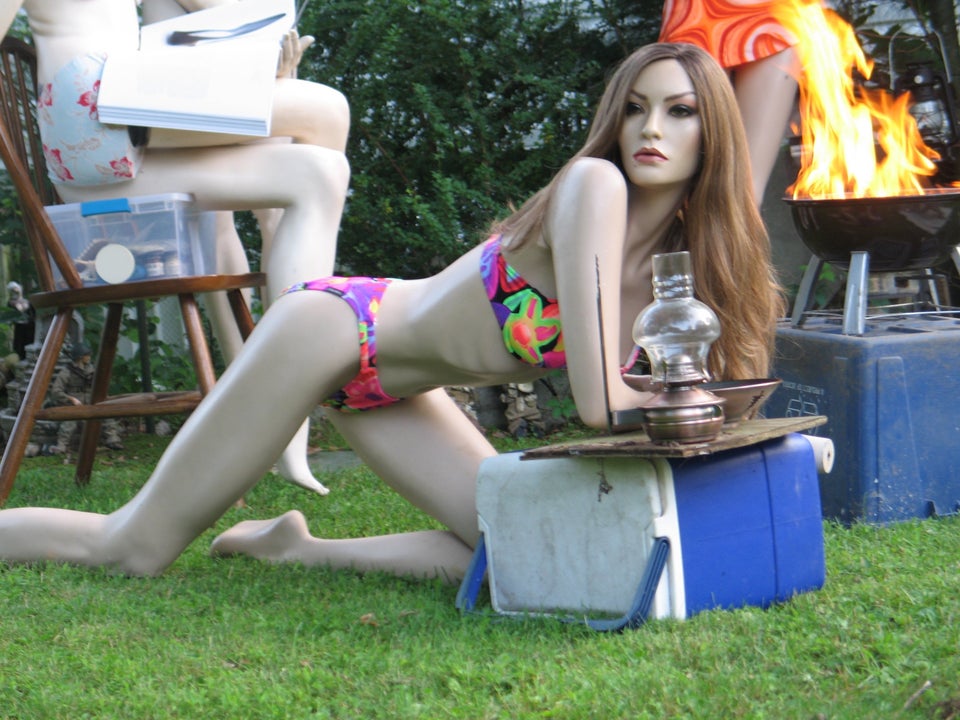In 2001, a Stanford art student named Jackie Sumell sent a letter to Herman Wallace, an inmate at Louisiana State Penitentiary, more commonly known as Angola. The letter read: “What kind of house does a man who lives in a 6-foot-by-9-foot cell for 30 years dream of?” The answer would take over 10 years to complete.
Wallace grew up in the Lower Ninth Ward of New Orleans, Louisiana. In 1971 he was convicted of armed robbery, a crime to which he admits, and sentenced to 25 years in an 18,000-acre maximum-security prison, once a complex of plantations, known widely as “the bloodiest prison in the South.”
During his sentence, Wallace started the first ever Black Panther party inside of a prison, along with fellow inmates Albert Woodfox and Robert King. The three worked to educate their fellow inmates, improve race relations and mitigate the violence and sexual assault that occurred within prison walls. They organized hunger strikes and protests, protecting the new inmates from the cycle of sexual slavery that was the status quo.
In 1972, Wallace, Woodfox and King were convicted of stabbing and killing 23-year-old prison guard Brent Miller. No physical evidence tied them to the crime. The testimony against Wallace, Woodfox and King, who came to be known as the Angola 3, was paltry. One of the case’s supposed eyewitnesses was legally blind, another rewarded for his statement. The accusation was largely understood to be a reaction to the activists’ political ties, considered “militant” by the white corrections officers and warden.
The three men were indicted by an all-white, all-male grand jury. After his conviction, Wallace was soon removed from the general prison populous and placed in indefinite solitary confinement. For the next 41 years, he would spend 23 hours a day alone in a 6-foot-by-9-foot cell.

Sumell first learned of Wallace’s story in 2001. King had been released from prison after 31 years and was telling the horrific story of his wrongful conviction to a group of artists in San Francisco. Sumell, a white, Long Island–born artist, wanted to do something. She wrote Wallace a letter. It would be the first of over 300 they’d exchange over the course of their 12-year friendship.
In the midst of their written exchange, when the inhumanity of solitary confinement was making a legible mark on Wallace’s personality, Sumell received an assignment from a class at Stanford: Ask a professor to describe his or her most exorbitant dream home, a study on spacial relationships.
“I struggled to balance the futility of my assignment — which reinforced the power dynamics of wealth, race, and privilege — with the stark reality of Herman’s condition,” Sumell wrote in her artist statement. She resolved, instead of asking a professor, to ask Wallace.
Technically, “The House That Herman Built” does not exist, in that there is no physical structure that combines the many details Herman Wallace built up in his head ― the roses, gloxinia and delphiniums surrounding the premises, the pecan-colored cabinets, the panther peeking up from the bottom of the pool, the constant supply of snacks in the snack closet.
And yet Wallace’s vision subsists in all its vibrant detail in his imagination, bringing a whole new dimension to the phrase “dream home.” Through envisioning every detail of his 3,500-square-foot suburban home, Wallace escaped the crushing limitations of his everyday existence. Through his collaborative project with Sumell, Wallace lived in two places simultaneously, a dismal, cramped cell and a picturesque home of his own creation.

Although Wallace and Sumell didn’t build a physical house together, they did create an exhibition, titled “The House That Herman Built/Herman’s House,” compiling the letters and drawings they exchanged over the course of a decade. Sumell also creates a virtual tour through Wallace’s home, which he narrates, guiding visitors through the yellow kitchen to the ‘70s-style, shag-carpeted bedrooms and wraparound porch. “In front of the house I have three squares of gardens,” he says when approaching the door. “I would like for guests to smile and walk through flowers all year long.”
The show also includes a life-sized, skeletal reproduction of Herman’s cell, based on his written descriptions and illustrated depictions. For visitors of the exhibition, the juxtaposition of the dream house’s fantastical presence and the confined cell’s physical reality mimic the dual reality of Wallace’s existence. The project, Sumell explained, has “become an international symbol of hope in the struggle to expose and ultimately end the inhumane practice of solitary confinement in the United States. It illustrates not only what is wrong, but also what is possible.”
On Oct. 1, 2013, the courts overturned Wallace’s conviction, and after 44 years of imprisonment, 41 in solitary, he was finally a free man. He died three days later of liver cancer, surrounded by friends and family. “Herman’s legacy is not one of suffering and imprisonment,” Sumell continued, “it is one of justice and freedom, of dignity and fairness, of love and unwavering commitment to the people.”
Although Wallace passed away before the rise of the Black Lives Matter movement, his spirit is evident in the contemporary fight for racial equality in the criminal justice system and prison industrial complex. His story serves simultaneously as a devastating reminder of just how long the same hateful injustices have plagued our nation’s history and a triumphant tale of the human spirit’s ability to overcome the most nightmarish of circumstances with resilience, creativity and hope for humanity.
Wallace and Sumell’s art activism project is currently on view at the American Visionary Art Museum in the group exhibition “The Big Hope Show,” comprising artists who used art to transcend unimaginable pain and struggle. The installation contains drawings and letters between the two, who grew to become best friends, including this letter from Wallace to Sumell, written in 2006: “I’m often asked what did I come to prison for; and now that I think about it Jackie, it doesn’t matter. It doesn’t matter what I came here for, what matters now is what I leave with. And I can assure you, however I leave, I won’t leave nothing behind.”
“The Big Hope Show” is on view until Sept, 4, 2016, at the American Visionary Art Museum in Baltimore, Maryland.


